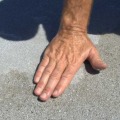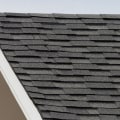Are you considering copper roofing for your home? Copper is a beautiful, durable, and low-maintenance material that adds value and charm to any home. In this in-depth guide, we will discuss the benefits of copper roofing, installation tips, and the best practices for maintaining a copper roof. Copper is one of the oldest and most enduring materials used in construction. It is lightweight, weather-resistant, and incredibly long-lasting.
Copper roofing has a distinctive beauty that adds both character and value to any home. In addition, copper is extremely resistant to corrosion, making it an ideal choice for coastal homes or other areas where salty air is a factor. The installation process of copper roofing is complicated and should be done by an experienced professional. We will go over the steps involved in installing a copper roof in this guide, from selecting the right contractor to choosing the appropriate fastening system.
Finally, we will cover the best practices for maintaining a copper roof over time. With regular maintenance and proper care, a copper roof can last for decades with minimal upkeep.
Disadvantages of Copper Roofs
Although copper roofing has many benefits, there are some drawbacks to consider. The main disadvantage is the cost. Copper roofs are more expensive than other materials, such as asphalt shingles, and can significantly increase the cost of a roofing project.Another potential issue is the need for regular maintenance. Copper roofs are prone to oxidation and should be inspected regularly to ensure they are in good condition.
Alternatives to Copper Roofs
Though copper roofs are becoming increasingly popular, they are not the only metal roofing option. Steel and aluminum are two other popular choices for metal roofing. Steel roofs are one of the most affordable options for metal roofing, and are resistant to fire and rust. They are also relatively easy to install and can be painted to match your home’s exterior.However, steel roofs are prone to denting and can be quite noisy during heavy rain. Aluminum roofs offer many of the same benefits as steel roofs, but are more lightweight and durable. Aluminum roofing is also resistant to rust and corrosion, but can be more expensive than steel. It is important to consider the pros and cons of each type of roofing material when deciding which one is right for your home. Factors like cost, durability, and style should all be taken into account when choosing a roofing material.
Advantages of Copper Roofs
Copper roofing is becoming an increasingly popular choice for homeowners looking for a beautiful, long-lasting roof. Copper roofs offer a variety of advantages, including durability and longevity.Copper roofs are incredibly durable and can last up to 100 years or more with proper maintenance and care. Copper is also resistant to many elements, making it an ideal choice for areas prone to extreme weather conditions. In addition, copper roofs are resistant to fire, rot, and insect damage, making them an ideal choice for any home. Another advantage of copper roofs is that they require minimal maintenance.
Copper roofs are resistant to rust and corrosion, so they don't require any special treatments or sealants to maintain their appearance. As a result, they are easy to maintain and can last for decades without the need for replacement. Finally, copper roofs are attractive and can add a unique look to any home. Copper roofs have a timeless beauty that can instantly add value to any home's exterior.
Copper roofs are also available in a variety of styles, so you can find the perfect look for your home.
Installation Process
Installing a Copper Roof requires several steps. First, the roofing area must be prepared for installation. This includes removing any existing roofing materials, cleaning the surface of the roof, and ensuring that the surface is level.Additionally, any areas that need to be replaced must be cut away and replaced with new copper materials. Next, a waterproof membrane should be installed over the roof before the copper sheets are applied. The copper sheets must then be cut to fit the size of the roof and fitted together. They should be installed with copper nails or screws. Additionally, a sealant should be applied to prevent water damage.
Finally, a protective coating should be applied over the entire roof to protect it from the elements.
Other Considerations
include proper ventilation of the roofing area. Proper ventilation will help to prevent moisture buildup which can cause corrosion and leaks. Additionally, copper roofs require regular maintenance and cleaning to ensure that they remain in optimal condition. Homeowners should also consider hiring a professional to install their copper roof to ensure that it is done correctly.Care and Maintenance
Caring for and maintaining a copper roof is essential if you want it to last.Copper roofs require regular cleaning to keep them looking beautiful and to protect the metal from corrosive elements in the environment. In addition, copper roofs are susceptible to damage from time to time due to exposure to the elements and should be inspected regularly for any necessary repairs. Cleaning a copper roof is fairly simple and can be done with a hose and a soft-bristled brush. Start by hosing down the roof with a low-pressure setting, then use the brush to remove dirt, moss, and other debris.
Be sure not to use any harsh chemicals or abrasive materials that could damage the metal. Inspecting a copper roof for damage is also important. Look for signs of corrosion, leaks, dents, or cracks. If any of these issues are present, it's best to call a professional roofer to assess the damage and recommend repairs.
It's also important to keep an eye out for any loose nails or screws that may need replacing. If these become loose over time, they can create a weak spot in the roof that may lead to leaks or other damage. Finally, be sure to check your copper roof regularly for signs of wear and tear, as this can help you catch any problems before they become too severe.
Cost of Copper Roofs
When it comes to the cost of copper roofing, there is no single answer. The total cost will depend on a variety of factors, including the size of the roof, the complexity of the installation, and the type of copper roofing material used.Generally speaking, however, copper roofing can be an expensive option when compared to other roofing materials. The price of copper roofing can range from $15 to $25 per square foot, depending on the type of copper and the complexity of the installation. For example, a solid copper roof may cost up to $25 per square foot, while a pre-finished composite copper roof may cost closer to $15 per square foot. It's important to note that the cost of installation will also factor into the total cost of a copper roof.
Professional installation can add up to 20% or more to the overall cost, depending on the size and complexity of the roof. Additionally, if any additional materials are needed such as flashing or sealants, these will add to the total cost. In some cases, homeowners may also want to consider other options such as copper shingles or copper tiles. While these materials can be more expensive than other types of roofing materials, they can offer an attractive and long-lasting alternative to traditional asphalt shingles.
Ultimately, it's important to consider all factors when determining the cost of a copper roof. It's wise to get multiple estimates from experienced contractors before making a final decision.










